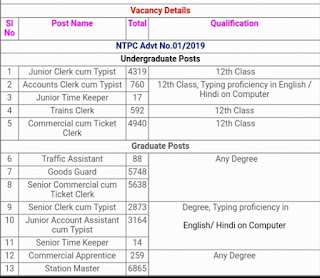RTE ACT: No detention policy and its ill effects
Right To Education (RTE) Act 2009 was passed to give enactment to the Constitution 86th amendment Act 2002 which made the right to education (Article 21A) a fundamental right to children from 6 years to 14 years.
RTE ACT provides for:
# Free education in government schools for children in age group 6-14.
# No detention policy till Class 8 (which is removed recently by an amendment
# 25% seats reserved for disadvantaged or economically weaker sections of the society in all schools.
# Minimum infrastructure , minimum teacher qualification
# pupil-teacher ratio ie., Students to teacher ratio.
No detention policy:
when the RTE Act was passed in 2009 it had section 16 which stated that “No child can be held back or expelled from the school till he completes elementary education”. This is the section which provided for the “No Detention policy” till class 8. This provision of the Act had greater effect on the quality of school education.
Its Ill Effects:
Annual Status of Education Report(ASER) data shows that exactly two years after enactment of RTE Act the level of quality in school education has been dropped. It shows this with the help of measurement of the data on the ability of the child to read and do mathematics.
# In 2010 nationally, 46.3% of all children in Std. V could not read a Std. II level text. This proportion increased to 51.8% in 2011 and further to 53.2% in 2012.
# For Std. V children enrolled in government schools, the percentage of children unable to read Std. II level text has increased from 49.3% (2010) to 56.2% (2011) to 58.3% (2012).
# In 2010, of all children enrolled in Std. V, 29.1% could not solve simple two-digit subtraction problems with borrowing. This proportion increased to 39% in 2011 and further to 46.5% in 2012.
# The proportion of all children enrolled in Std. V who could not do division problems has increased from 63.8% in 2010 to 72.4% in 2011 to 75.2% in 2012.
The above data of declining trends has now been passed from class V to class VIII in the recent years. As ASER Report 2018 shows that
# In 2008, 84.8% of Class VIII students could read a text meant for Class II; by 2014, it dropped to 74.6% and by 2018, that percentage had fallen further to 72.8%.
# Similarly, in 2014, 44.1% of students at Class VIII could correctly divide a three-digit number by a single-digit number. This in 2018 had fallen slightly to 43.9%.
Also Learning Poverty Headcount (LPC) which measures the number of children who doesn’t meet the basic learning standard shows that LPC in rural India is around 40-50%. Similarly, Learning Poverty Gap (LPG) Which measures the gap between the basic learning standard and the average scores of the students who did not meet that standard shows that LPG for for rural India is around 20-25%.
The National Achievement Survey (NAS) conducted by the National Council of School Education Research and Training (NCERT) also confirms this gap in learning from its findings with national average scores of 257 for language and 252 for Mathematics with not much difference in scores from rural and urban India.
RTE Amendment Act 2019:
Due to these ill effects of “No detention policy” and failure of RTE Act to provide quality education to the students forced the state to bring an amendment in it. So the government amended the RTE Act as follows:
section 16 of RTE ACT (No detention policy) was amended as
# There shall be a regular examination in the fifth class and in the eighth class at the end of every academic year
# It further said that If a child fails in that examination .Then he/she shall be given additional instruction and granted opportunity for re-examination within a period of two months from the date of declaration of the result.
The amendment Act also not completely eliminated the “No detention policy” as it says that even if the child fails the re examination the appropriate government can decide not to hold back a child in any class till the completion of elementary education.
Way forward:
Though the No detention policy has improved the enrollment ratio but in the quality part it has made a deep compromise. If the RTE Act was passed for the purpose of bringing the child under education then it has done its part to an extent. But the motive of providing quality education it has failed in many levels. So, the solution to these quality needs come from the teachers and curriculum and infrastructure side rather than on the examination.
Just by introducing an Exam in these classes will not make up for the lag in quality. Some states like Tamil Nadu are looking for a possibility of public examination at classes V and VIII which they are not allowed to do so. As the RTE Act section 30(1) clearly says that “No Child is required to pass any board examination until completion of elementary education ( ie., Class VIII)”. So rather than thinking on the possibility of an exam the government and other stakeholders must concentrate on providing real time solutions. They could make some interactive teaching methods and syllabus that enhances the learning interest in the child and also increases his problem solving skills. The new method needs to be one which doesn’t encourage rote learning.
Finally, if the Indian government wishes to provide for the gap in the education quality then it has to do it as quickly as possible. Because of the majority of youth population that India will have in next 20 years are now in their primary or elementary school stages so if they are not provided with the quality education their skills will be a greater mismatch which will be huge problem to the country.

Comments
Post a Comment